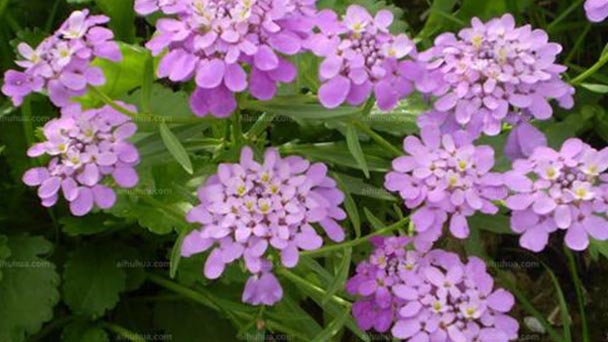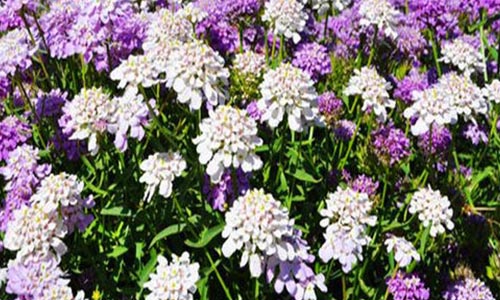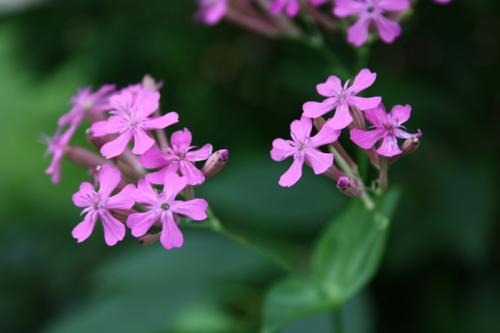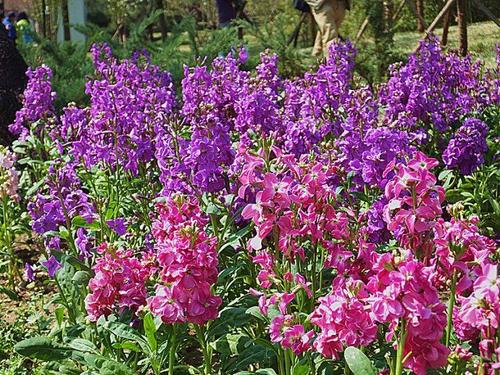How to Grow Iberis Amara
Written by Maggie
Jan 12 2021

Iberis Amara is a perennial flower that hugs the ground. It is often used for trimming. Iberis Amara Plant is a late flowering period that can illuminate the garden in April or May. It is best to plant in early autumn. This is a slow-growing plant that can light up the garden for many years. Its white or pink flowers are rich and gorgeous. A large number of blinding white flowers dotted the stem. The color of the flowers is very eye-catching against the background of dark green leaves, which also makes these plants suitable for moon gardens.
The petals form a beautiful pattern, and if you are willing to adopt a good look, it will never attract your attention. One thing that flowers don't need is a pleasant fragrance. The smell is actually unpleasant.

How to grow Iberis Amara
Like other candy clusters, iberis amara is considered evergreen or semi-evergreen subshrubs, but most gardeners treat candy clusters in the same way as other perennial flowers. This kind of flowering ground makes it a so-called "cruciferous plant", but the name is usually reminiscent of food crops such as broccoli. The mulch is part of the mustard (or cabbage) family.
Iberis Amara flowers are suitable for growing in the hard zone 4 to 8 of the USDA. When planting, if you want ground cover plants to cover quickly, convert them to about 6 inches apart in each other's soil. To make the Iberis Amara look neat and tidy, you can bloom. However, if you want to plant Iberis Amara flowers behind the retaining wall, the delay may actually be a good quality. under these circumstances. In this case, only be completely obsessed with these if you think the stems look too woody. Decomposition will produce new, new growth.
Light for Iberis Amara
The Iberis Amara can tolerate certain shades, but when planted in the sun, it blooms best. For Zone 8, all varieties of Iberis Amara have a point benefit, where the flowers in the hottest part of the day (especially in the hot summer) will be in partial shade in the afternoon.
Mud for Iberis Amara
Iberis Amara prefers the gravel soil found in their place of origin. More importantly, provide them with excellent drainage performance. This perennial plant prefers to grow in soil where the soil pH is alkaline.

Water for Iberis Amara
Once established, Iberis Amara flowers are moderately drought-tolerant, but young plants must be watered, especially during periods of drought.
Temperature and humidity for Iberis Amara
In cold areas (such as zone 5), the leaves are only semi-evergreen. Some gardeners in cold regions gently place pine branches on plants in late autumn to protect them from the cold and dry wind in winter and prevent them from remaining green.
The natural environment of Iberis Amara tends to be dry air. Therefore, it is not recommended to use in areas with high humidity such as the southeastern United States, because the flowers are easy to wither.
Fertilizer for Iberis Amara
If replaced in early spring, slow-release fertilizers will help the growth of Iberis Amara. Choose low nitrogen and high phosphorus to replace the best effect.
Spread Iberis Amara
If propagating from cutting, choose a green, healthy stem that is a little longer or longer. Even the stem will automatically take root, but it does need to happen. If you use this method, please be patient. Before Iberis Amara dormant in winter, they can also spread through root division in autumn. A large Iberis Amara plant can be divided into two to three new plants, each of which contains stems and roots.
Landscape use of Iberis Amara
Because Iberis Amara flowers are eager to drain well-drained soil, they are very suitable for rock gardens, where Angelina stonecrop planted good companion plants. Their drought resistance also makes Iberis Amara a good choice for beautifying the environment. Finally, their green leaves and showy flowers make Iberis Amara effective where short-side plants or ground cover are needed. They are short enough not to block the view of the flowers growing behind you.
Iberis Amara flowers can effectively attract bees and butterflies to your landscaping environment, thereby improving the pollination of other perennial plants.

Latest Updated
- Benefits of Bugleweed - 7 Science-backed Health Benefits
- Bugleweed Dangers & Side Effects - Is It Poisonous?
- How to Plant Evergreen Trees - What You Should Know
- When to Plant Evergreens - Grow Guide for Evergreen Trees
- 12 Wonderful Evergreen Shrubs for Your Garden
- 12 Popular Evergreen Plants with Pictures for Beginners
- When And How To Prune A Lilac Bush Like a Pro
- How to Grow & Care for Lilac Vine (Hardenbergia Violacea)
- Japanese Lilac Tree (Syringa Reticulata) Care & Propagation Guide
- Shumard Oak Pros and Cons - What to Know
Popular Articles
- Winter maintenance of Antirrhinum Majus
- How to Grow Terminalia Mantaly Tree
- How to Grow and Care for Crossostephium Chinense
- How to grow Antirrhinum Majus in spring
- Peristeria Elata (Dove Orchid) Profile: Info & Care Guide
- Underwatered Snake Plant (Sansevieria Trifasciata) - Signs And How To Fix
- How to Care for Brazilian Jasmine Plant (Mandevilla Sanderi)
- How to Grow & Care for Graptopetalum Purple Delight in Summer
- Rosa Chinensis (China Rose): Plant Growing & Care Tips
- How to Care for Baby Sun Rose (Aptenia Cordifolia)